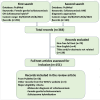The impact of Schistosoma haematobium hybridization on molecular diagnosis of schistosomiasis: A review with emphasis on female genital schistosomiasis
- PMID: 40773459
- PMCID: PMC12331096
- DOI: 10.1371/journal.pntd.0013364
The impact of Schistosoma haematobium hybridization on molecular diagnosis of schistosomiasis: A review with emphasis on female genital schistosomiasis
Abstract
Female genital schistosomiasis (FGS) is a gynecological manifestation of urinary schistosomiasis in female genitals. FGS is a neglected tropical disease; not only are most patients unaware of the condition, but healthcare workers and policymakers have inadequate knowledge about it. The treatment and control of FGS relies on current guidelines for controlling and eliminating schistosomiasis without rigorous focus on clinical evidence of the presence of FGS. Neglect of FGS has led to the misconception that the disease is sexually transmitted. Diagnosing FGS remains challenging as there is no widely accepted reference assay. Urine examination, which is the gold standard in urogenital schistosomiasis has some limitations in diagnosing FGS as the demonstration of Schistosoma haematobium and/or eggs alone does not necessarily indicate FGS. In order to overcome challenges with the biopsy and colposcopy approach, some studies have evaluated the potential of PCR-based assays and isothermal amplification of Schistosoma DNA. Recent studies have reported hybridization between S. haematobium and other livestock schistosomes, but little is known about the impact of hybridization on schistosomiasis diagnosis. These hybrids not only affect livestock and humans but also have their genomes modified, and in some cases, abnormal egg morphology due to Schistosoma hybridization might affect the actual prevalence estimation. Herein, we highlight the potential impacts of S. haematobium hybridization on molecular diagnosis of schistosomiasis, with an emphasis on FGS.
Copyright: © 2025 Ally et al. This is an open access article distributed under the terms of the Creative Commons Attribution License, which permits unrestricted use, distribution, and reproduction in any medium, provided the original author and source are credited.
Conflict of interest statement
The authors have declared that no competing interests exist.
Figures




Similar articles
-
Schistosoma mansoni x S. haematobium hybrids frequently infecting sub-Saharan migrants in southeastern Europe: Egg DNA genotyping assessed by RD-PCR, sequencing and cloning.PLoS Negl Trop Dis. 2025 Mar 31;19(3):e0012942. doi: 10.1371/journal.pntd.0012942. eCollection 2025 Mar. PLoS Negl Trop Dis. 2025. PMID: 40163525 Free PMC article.
-
Circulating antigen tests and urine reagent strips for diagnosis of active schistosomiasis in endemic areas.Cochrane Database Syst Rev. 2015 Mar 11;2015(3):CD009579. doi: 10.1002/14651858.CD009579.pub2. Cochrane Database Syst Rev. 2015. PMID: 25758180 Free PMC article.
-
The Black Book of Psychotropic Dosing and Monitoring.Psychopharmacol Bull. 2024 Jul 8;54(3):8-59. Psychopharmacol Bull. 2024. PMID: 38993656 Free PMC article. Review.
-
The first BILGENSA Research Network workshop in Zambia: identifying research priorities, challenges and needs in genital bilharzia in Southern Africa.Wellcome Open Res. 2025 Apr 11;9:360. doi: 10.12688/wellcomeopenres.22429.2. eCollection 2024. Wellcome Open Res. 2025. PMID: 39170763 Free PMC article.
-
Time to bring female genital schistosomiasis out of neglect.Br Med Bull. 2024 Mar 13;149(1):45-59. doi: 10.1093/bmb/ldad034. Br Med Bull. 2024. PMID: 38220571 Free PMC article.
References
-
- Léger E, Borlase A, Fall CB, Diouf ND, Diop SD, Yasenev L, et al. Prevalence and distribution of schistosomiasis in human, livestock, and snail populations in northern Senegal: a One Health epidemiological study of a multi-host system. Lancet Planet Health. 2020;4(8):e330–42. doi: 10.1016/S2542-5196(20)30129-7 - DOI - PMC - PubMed
-
- WHO. WHO guideline on control and elimination of human schistosomiasis. 2022. - PubMed
-
- WHO. Female genital schistosomiasis: a pocket atlas for clinical health-care professionals. World Health Organization. 2015. Available from: https://www.who.int/publications/i/item/9789241509299
Publication types
MeSH terms
LinkOut - more resources
Full Text Sources

